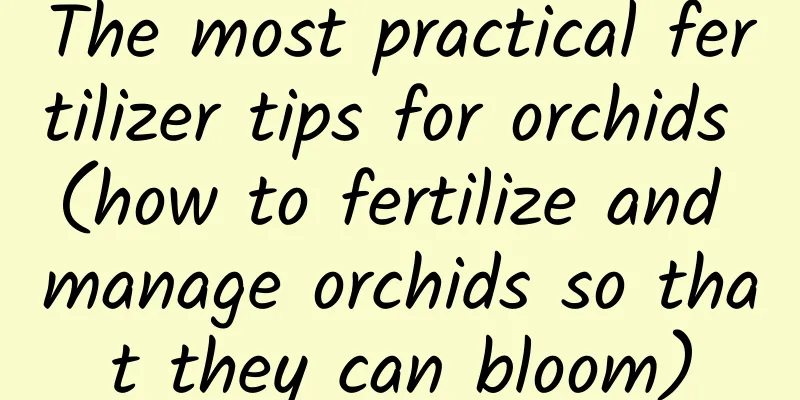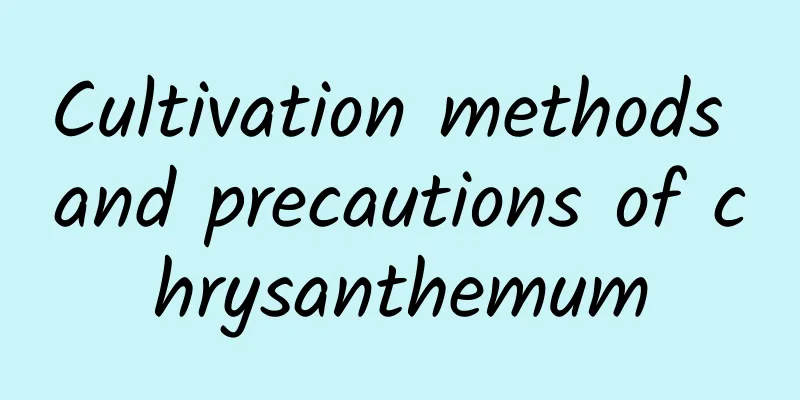The most practical fertilizer tips for orchids (how to fertilize and manage orchids so that they can bloom)

How to fertilize orchids correctlyFertilization is indispensable for growing orchids. After all, there is only so much planting material in the flowerpot, and it is impossible to maintain the growth of orchids all the time. Because of this, we also need to pay attention to orchid fertilization. There is no single, unified way to fertilize orchids, as long as it is correct. When it comes to fertilizing orchids, there are many fertilizers and many techniques that are correct. Daily fertilization:Orchids are plants that are grown for viewing their flowers and leaves. When they are not in bloom, they are mainly grown for viewing their leaves. At this time, we need to use organic fertilizers with balanced nutrients and supplement "nitrogen, phosphorus and potassium" in a balanced manner to ensure balanced growth of nutrients in the leaves and roots at this stage. Fertilize before leaf bud:Orchids usually start to sprout leaves in spring. When fertilizing before the leaves sprout, you should first apply nitrogen-based fertilizers. Generally, you should use urea twice, dilute it 500 times with water, and water the soil with an interval of about 10 days. Apply "nitrogen" first to promote the growth of leaves and leaf buds. Then use organic fertilizer with balanced nutrients. The growth time of leaf buds of different varieties of orchids varies slightly, so please note this. Fertilize before flowering:One month before the orchid bud formation period, you can use fertilizers that are more phosphorus and potassium. It is recommended to use a 1200-fold aqueous solution of "potassium dihydrogen phosphate" and spray it to wet the leaves and reed heads. Potassium dihydrogen phosphate can improve disease resistance, promote nutrient absorption efficiency, and promote flowering. Different orchids have different flowering periods, so pay attention to the bud formation period when fertilizing. Key points and precautions for orchid fertilization1. When fertilizing orchids, you should pay attention to the following: first, keep the orchids in a well-ventilated and suitable light environment. The temperature should be within the range suitable for orchid growth. Keep them outdoors for about 10 days before fertilizing. 2. Fertilization should be done in the afternoon on a sunny day. On the third day after applying compound fertilizer, water thoroughly. When applying organic fertilizer, it is best to bury it shallowly. 3. The amount of fertilizer to be applied should be strictly in accordance with the instructions, and strong seedlings can be given more fertilizer, while weak seedlings should be given less fertilizer. When applying fertilizer, pay attention to "applying thin fertilizer frequently, and preferring less rather than more". |
<<: Can Monstera survive by cuttings? (How to successfully propagate Monstera by cuttings?)
>>: Watering methods and precautions for Christmas cactus (when to water Christmas cactus)
Recommend
How to prune gardenia during its growth period
Gardenia has different needs at different growth ...
How to divide Aspidistra into pots and what are the time and method for dividing the pots
Time to divide the pot of Aspidistra When you wan...
How to grow spring fern hydroponically to make it more vigorous?
Spring feather is a perennial evergreen herb of t...
Which side should sunflower seeds be planted facing down?
1. Which side is facing down? Sunflower seeds are...
Can leaf ash be used as fertilizer?
Leaf ash as fertilizer The ash from burnt leaves ...
What to do if the leaves of the transit tree turn yellow
1. Stop fertilizing (1) Specific reasons: This as...
Generation-by-generation farming methods
1. Soil In its maintenance, there are not too man...
What is agave, agave pictures
1. What is Agave is a herbaceous plant of the Asp...
Is the Venus Flytrap poisonous?
Is it poisonous? The Venus flytrap has many regul...
What is the function of Allium
Allium can beautify the environment During the fl...
Can Golden Heart Chlorophytum be hydroponically cultivated? Hydroponics cultivation method
Can Golden Heart Chlorophytum be hydroponically c...
How to grow the Dancing with Grace to make it bloom
The Dance of Gagaku Blossoms The Dancing Plant ra...
How to plant potted chicken feather vegetables and precautions for balcony chicken feather vegetables at home
If you want to grow potted chicken feather vegeta...
Can bougainvillea be planted in the ground in the north?
1. Can Winters in the north are relatively cold, ...
How to grow ornamental sunflowers
Sowing time The biggest feature of ornamental sun...









